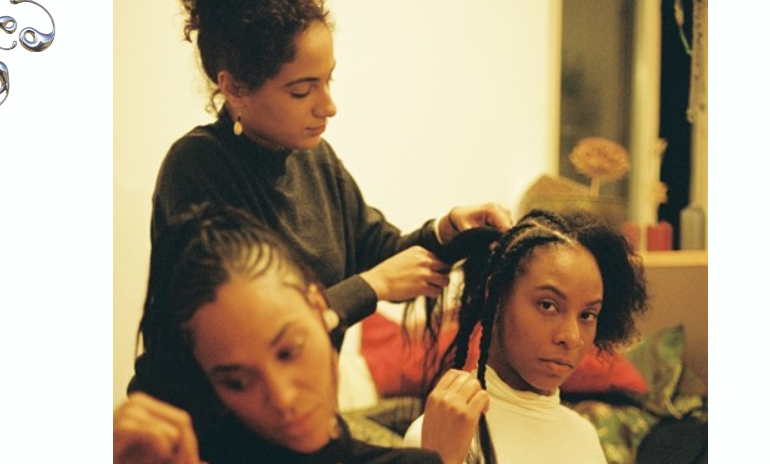Tag: quarantine
Twitter employees can work from home forever, CEO says
Twitter’s new policy comes as businesses across the nation are struggling to adapt to social distancing guidelines.
Twitter will allow employees to work from home for as long as they want.
Twitter CEO Jack Dorsey told his employees Tuesday that many of them will be allowed to work from home in perpetuity, even after the coronavirus pandemic ends, according to a company spokesperson.
“Opening offices will be our decision,” the spokesperson said. “When and if our employees come back, will be theirs.”
In an email, first obtained by BuzzFeed News, Dorsey said it was unlikely that Twitter would open its offices before September and that all in-person events would be canceled for the remainder of the year.
The company will assess its plans for 2021 events later this year.
“We were uniquely positioned to respond quickly and allow folks to work from home given our emphasis on decentralization and supporting a distributed workforce capable of working from anywhere,” the spokesperson said.
“The past few months have proven we can make that work,” she said. “So if our employees are in a role and situation that enables them to work from home and they want to continue to do so forever, we will make that happen. If not, our offices will be their warm and welcoming selves, with some additional precautions, when we feel it’s safe to return.”
Twitter’s new policy comes as businesses across the nation are struggling to adapt to social distancing guidelines and rethinking how they will operate in a post-pandemic world.
Workers weigh safety and their job in early reopen states
Major tech companies such as Facebook, Google and Microsoft were early to move to a work-from-home model and have also been the most cautious in planning for moving employees back into the office.
Google has told employees that the vast majority of them will work from home until 2021, though some will return in the early summer. Facebook will similarly start to reopen offices after the July 4 weekend but will let employees who are able to work from home do so until next year.
The long-term work-from-home policies of these companies stand in stark contrast to much of the rest of the country, where states are slowly easing lockdown restrictions. Governors in several states, including California, where Twitter, Facebook and Google are based, have already started a phased reopening of their economies.
Article via NBCNews
5 exercises to offset too much sitting
Article via CNN
It’s another day of self-isolating, which means it’s potentially another day of sitting indoors restlessly taking yet another Zoom meeting.Prolonged sitting is an unavoidable reality for many. And with lots of us spending more time inside, as the pandemic continues, it’s inevitable that we’re spending even more time being sedentary. The irony is that we’re staying home to protect our health, but all that added sitting is putting our health at risk in other ways.In addition to being a risk factor for many life-threatening cardiovascular and metabolic diseases, excessive sitting can lead to depression, chronic pain and increased risk of physical injury, according toresearch. That’s why it’s important for us to become aware of our sitting habits and do what we can to counteract them.
The poor posture problem
Poor posture is the most recognized, tangible problem associated with too much sitting. Many of us know, all too well, how our sitting posture contributes to neck and back pain while limiting our ability to move our shoulders and spine. Simple, passive stretches, like standing and raising your arms overhead, can provide immediate relief of tension and help break up long bouts of sitting, but they don’t create long-term posture changes. Only exercises that address the muscular dysfunction from poor sitting posture will strengthen weakened muscles and inhibit overactive ones to truly counteract the impact of too much sitting.
The two most common posture issues associated with sitting are Upper-Crossed Syndrome and Lower-Crossed Syndrome. Upper-Crossed Syndrome is characterized by slumping shoulders due to a dysfunctional combination of over- and underactive muscles in your chest, neck and shoulders. Lower-Crossed Syndrome, which usually goes hand in hand with its upper-body counterpart, creates issues of tension and weakness in your core, back and hips. To provide both instant relief and restore muscle function, the five exercises below include a combination of instant-gratification, feel-good stretches with posture-correcting exercises.
No more aches and pains
Practice the first three stretching and mobilizing exercises throughout your day to break up long bouts of sitting. Ideally, try to get up from sitting at least once per hour to stretch. Do the last two strengthening and mobilizing exercises daily to make lasting, positive changes to your overall posture. Many of my professional athlete clients do them as part of their daily warm-ups.You’ll notice that specific breathing instructions are included with all the exercises. That’s because your diaphragm, your primary muscle of respiration, attaches to both your rib cage and your spine. Consequently, how you breathe has a significant impact on the overall position of your ribcage and spine, which, in turn, creates your body posture. Important note: Consult your physician before starting any new exercise program. Use caution and stop if you feel any pain, weakness or lightheadedness.
Supported warrior one with hip flexor release

This move stretches out tight hip flexors and compressed side waist muscles from too much sitting.Place your left hand lightly on top of a chair or desk, and move your right foot back so that your left leg is in a short lunge position. Drop your back heel and point your toes out slightly. Bend your front knee to align above your ankle, keeping your back leg straight. Inhale as you lift your right arm up and over your head. Exhale as you side bend to the left, feeling your left lower ribs rotate inward. Avoid arching your lower back. Press the front of your right hip forward to release your right hip flexors. Hold for three long, deep breaths. Repeat on the other side.
One-arm doorframe stretch
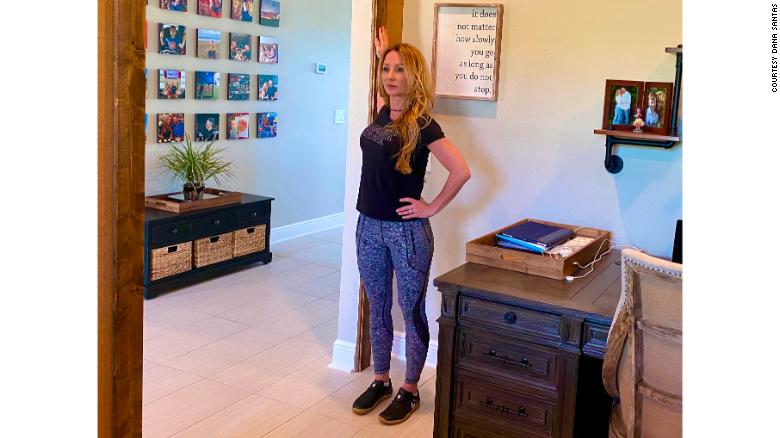
This stretch provides relief of tension in your chest muscles and the front of your shoulders that come from slumping in a seated position.Standing and facing an open doorway, place a forearm on the doorframe with your elbow bent to 90 degrees at shoulder height. Your upper arm should be parallel with the floor. Rotate your body away from your arm until you feel a stretch in the front of your chest. Hold for three long, deep breaths, keeping your back neutral and lower ribs down. Repeat on the other side.As a variation, if you have a narrow enough doorway, you can stretch both sides at once by placing both forearms on either side of the doorframe. Instead of rotating your body, step one foot through the doorway until you feel a stretch.
Supported windmill twist
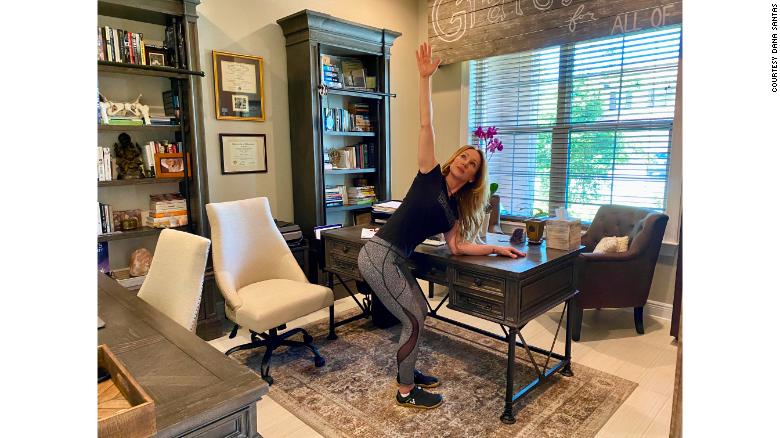
This exercise relieves the upper-body rigidity caused by a static sitting posture. The twisting motion, coordinated with your breathing, promotes mobility of your rib cage and thoracic spine while opening up the chest, side waist muscles and low back.Standing and facing a desk or counter, sit back slightly into a shallow squat position, then hinge from your hips to bend over and place your left forearm down on the desk or countertop.
Keeping your knees bent with your hips and low-back neutral, inhale as you reach your right arm forward and rotate from your shoulder, mid-back and rib cage to twist open to the right, reaching your hand upward. Hold for three breaths, using your respiration to facilitate the twist. Focus your inhalations on the open side of your rib cage (the side you’re turning to) and exhalations on the opposite side, where you can use side waist muscles to internally rotate your ribs and enable further rotation of your rib cage and mid back. Unwind and practice the rotation to the left from the same starting position with your right forearm down.
Wall angels
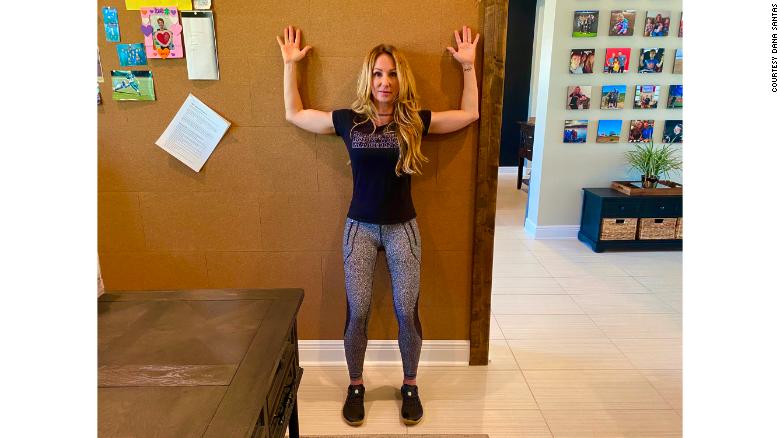
Wall Angels, also known as scapula (shoulder blade) wall slides work to strengthen your back muscles to counteract the overactive muscles in the front of your body that pull you into a slouched position while seated.Stand with your back against a wall, keeping your feet hip distance about 6 to 8 inches from the wall. Bend your knees slightly to use some leverage from your legs and core to help push your entire back into the wall with your lower back as flat as possible. Rest the back of your head against the wall, directing your gaze forward.
Raise your arms up to shoulder height, bending your elbows to 90 degrees with your shoulders, elbows and backs of your hands against the wall. Inhale as you slide your hands and elbows up the wall until you start to feel like it’s difficult to maintain the touch points of your back, head, shoulders, elbows and hands against the wall. Exhale as you slide your arms back to 90 degrees.Repeat this motion through five long, deep breaths. With every exhale, concentrate on moving your lower ribs in, back and down while also pulling the base of your shoulder blades down. Even though this exercise may feel difficult and awkward to hold, making you think you aren’t accomplishing much, you should find that when you move away from the wall you’ll notice an increased freedom of shoulder movement, reduced thorax stiffness and increased rib mobility.
Breathing bridge
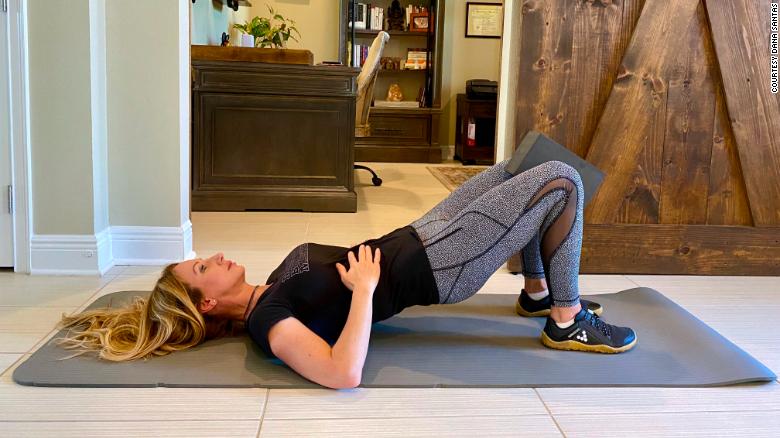
This positional breathing exercise strengthens your diaphragm, core and glutes while releasing your hip flexors to establish an optimal rib cage and pelvis position for better overall posture.This is the starting position all of my athletes use to train their breathing and set their posture. Begin on your back with your knees bent and feet on the floor, hip distance apart. Place a foam yoga block, foam roller or rolled towel between your legs to engage your inner thighs and avoid your hips externally rotating and knees splaying out. Place your hands on your lower ribs so you can feel them moving in and out horizontally with each phase of your breath. You want to avoid upward movement of your rib cage while breathing, and you shouldn’t feel any stress or tension in your jaw, neck or shoulders.
Exhale fully, drawing your lower ribs in toward each other, feeling your core turn on and your ribcage move downward. At the end of that exhale, without breathing in yet, tuck your tailbone, flattening your low back and lifting your hips approximately 3 or 4 inches off the floor. Avoid arching your low back. Maintaining the bridge posture, inhale, trying to expand your ribs out to the sides.Hold this position using the strength of your core and glutes, taking five long, deep breaths, focused on horizontal rib movement. Repeat for a total of two sets of five breaths.Adding these five simple exercises to your daily routine will help improve your posture, reduce neck pain and backaches and boost your overall health and wellness.
Tips on caring for afro hair in quarantine, from hairstylist Kemi Akinbola
Use this guide to get your locks on point at home
Article via DazedDigital
Not going out means there’s no need to lay down your edges, secure your wig, apply heat or twist/plait/pack (delete as applicable) your hair every morning. Seriously. If you’ve reached the end of your protective hair cycle, take it out and be free, let your fade grow out until you see your go-to person again. “Now is the perfect time to become good friends with your hair,” says Kemi Akinbola, the hair stylist behind the orange and black waist-length braids IAMDDB sported at Field Day Australia in January. “I had braids in and I was like, ‘I’m in quarantine so these braids are coming out.’ (That way) you can see what your hair is doing everyday, keep it moisturised and spend time detangling. When we come out of this, if you do want to put your hair in a protective style, you’ll know that your hair’s been looked after.”
Formally trained to do all types of hair and styles, Akinbola is a crochet specialist with her own burgeoning music career, and a word-of-mouth client base that includes fellow singer Nao and make-up artist and Dazed Beauty community member Mata Marielle. Operating out of her home, the hairstylist’s approach is organic, steered by Subrina Kidd and experimenting on her own 4B/C texture, and all about empowering people to nurture their own barnets in all their glory. “Use the products you have, try different twist outs, braid outs, cornrows or practise having your hair out. Get used to the way your hair looks and being your authentic self with your hair.” So relax and read on for Akinbola’s tried-and-tested afro hair tips and favourite products.
HAVE ON HAND…
“A good shampoo, ideally sulphate-free and a highly moisturising, deep conditioner. I use Creme of Nature which also has an intense treatment conditioner or the Dizziak shampoo and conditioner. I would make sure I have a good leave-in conditioner too from As I Am or Giovanni to leave in overnight if you want too. Then a nice oil. My hero product which I really really love is Sunny Isle Jamaican Black Castor Oil Pure Butter Lavender. It’s moisturising, smells nice, helps edge regrowth, and you’ll find your hair is extremely soft. Decide how much product to use based on how much hair you have and how it feels – I’m quite heavy-handed. Make sure you get the product onto every strand.”

TAKE YOUR TIME
“What I would do is shampoo and then a deep treatment, put a plastic cap on and leave it on for a while. If you have a hood dryer, sit under that to make sure it penetrates the hair. Detangle your hair, rinse the conditioner out, then put your hair in twists to let it air dry. There’s no rush is there?”
BUILD-UP BE GONE
“It’s best to use a really strong shampoo, maybe a sulphate one, or if it is sulphate-free make sure it foams. If you have a protective style and you find you have a lot of product build-up (when you take it out), don’t be afraid to do more than one shampoo, maybe three or four if you need to. Make sure you really scrub every inch of your scalp. As long as the scalp and hair is fully foamed up and really clean, it should go.”
GET YOUR TWIST OR BRAID OUT POPPING
“Get a wide tooth comb and some leave in conditioner and divide your hair into sections. If you do loads you’ll have a more defined twist out, but if you’re not that fussed, 10-15 is fine. Run leave in conditioner through each section, seal it in with an essential oil of your choice, then detangle with your fingers or a comb. If you don’t mind the shrinkage, do a double strand twist (two chunks of hair to create a rope twist) with each section for a more spiral, afro look. If you want your hair stretched out for length and volume, do it with three for a braid out and a more zigzag look. Make sure the ends are fully moisturised so they coil up.”
“Then leave it to dry. It can be your protective style for a week and if you want to take the sections out, get a nice oil, rub it through each twist /braid and unravel them starting from the end. Seperate them, shake it out and see how it looks. It’s a good time to experiment and there are so many tutorials on YouTube. Type in your hair type and ‘twist out’ to search. Choose a YouTuber who has the same hair type and be realistic about the end result.”
REVIVE YOUR EDGES
“It’s easier to look after your edges if your hair isn’t in a protective style, unless it’s one with your hair like mini twists or cornrows or braids. Castor oil is the main product to apply. Tea Tree oil, rosemary oil, oils that are healing and also give it time. Obviously if your edges are weak, don’t do anything tight around your hairline or slick your hair down. At night, rather than tying a satin scarf around your head like a pirate, which rubs on your edges, put a loose bonnet over your hair instead. A silk or satin pillowcase is fine but if you’re using oils overnight, they’re going to go on the pillow and your face (if you’re not wearing a bonnet). Just keep everything loose until your edges grow back.”

DIY OILS AND TREATMENTS
“Now’s the time to play around with the oils in your cabinet. Extra virgin olive oil is a good moisturiser and people also like to use coconut oil, peppermint oil is anti-inflammatory if you have an itchy scalp. I like castor oil because it’s very good and I have a lot of hair. It really depends on if you’d like your mix to be thick and it’s a case of trial and error. You just don’t want something that will make your hair crispy. People say that honey, eggs and avocado make a good moisturising home-made mask but I’ve never tried it myself. If you run out of shampoo, you can use apple cider vinegar to clean your hair.”



